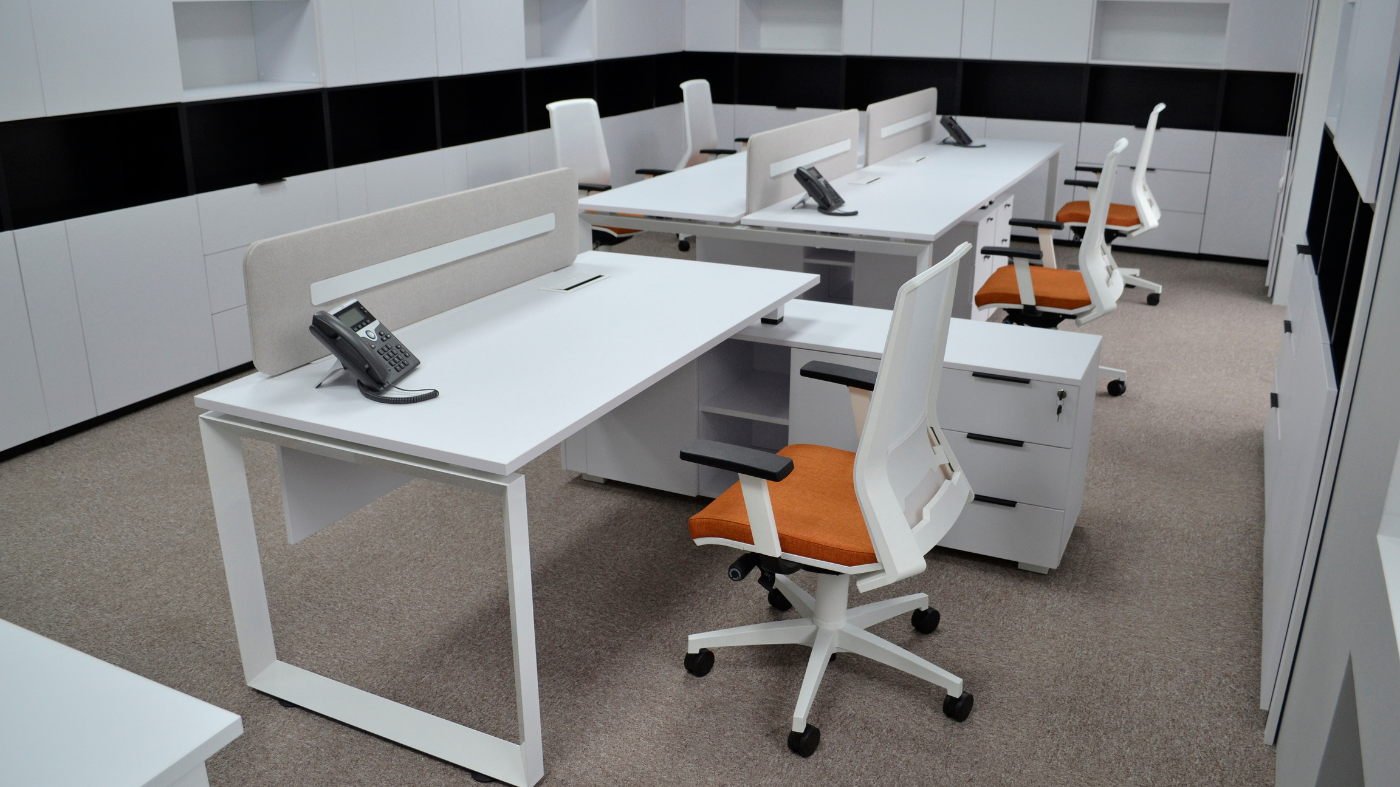Productivity in the workplace is the cornerstone of your business’s success. From too many distractions to not enough lighting, many factors can diminish your professional productivity. But if you design your workspace with higher productivity in mind, you’re ensuring more quality work gets done effectively and efficiently.
If you are interested in designing your workspace for higher productivity, check out our five recommendations below.
Boost Workspace Productivity With Custom Ergonomic Furniture
As an expert furniture design company, we know how furnishings impact your workspace. The first way to design your workspace for higher productivity is to select custom ergonomic furniture for your space.
Ergonomics is recognized widely as a productivity booster in the workplace. Reducing ergonomic stressors that impact your ability to focus and get work done is the goal of selecting ergonomic furniture that integrates seamlessly with your overall design. Before partnering with us to create the perfect ergonomic piece, evaluate where ergonomics will best enhance your productivity. For example, a beautifully carved sit-stand desk or durable, natural fiber desk chair can do a lot to bolster productivity – and keep you healthy!
The more custom your workspace furniture is, the more likely you will settle into a productive workflow conducive to getting work done more efficiently.

Sufficient and Varied Lighting For Increased Workspace Focus
We recently posted a guide to creating a lighting plan for your workspace that outlined several steps to consider. In terms of productivity, ensuring your lighting plan is solid is an important component of designing a great workspace.
In our post, we outlined the different lighting you may need in a workspace, including natural lighting, overhead lighting, accent lighting, and task lighting. To boost your workspace productivity, we recommend including a mix of all four types of lighting in your workspace. Natural lighting and LED-based overhead lighting are essential for properly illuminating your workspace, but custom accent and task lighting offer the biggest boost to workspace productivity.
While accent lighting improves the overall ambiance of your workspace and contributes to a better mood, task lighting is not just for aesthetic reasons. Task lighting is an ergonomic tool that offers you complete control over the light required to focus on projects. Consider including several task lighting options in your workspace design to improve productivity.

Design a Break Room for A Boost in Workspace Productivity
Another design element you can use to increase productivity in your workspace is a well-designed refuge. While there’s no getting away from hard work forever, comfortable areas to take a break are well-deserved and essential for boosting productivity.
In fact, a 2018 study found that small breaks throughout the day increased work engagement and productivity. A well-designed break room should include several important elements if you want to increase your workspace productivity:
- Comfortable seating with natural fibers and enough support to offer the perfect relaxation perch.
- Plenty of eye-pleasing and functional storage for break room essentials, like beverages and snacks.
- Entertainment area with custom furniture to match your company’s brand and design aesthetic.
- Natural elements like bamboo chairs, large picture windows that frame the natural exterior, or even a custom living wall inspire and encourage deep relaxation.
At Acacia, we can help you determine the best break room element that works perfectly with your design as well as boost workspace productivity. Check out our featured partnerships to see our expertise in action.

Workspace Paint for Productivity
Deciding on a paint color for your workspace design can boost or hinder your productivity. Using less vibrant colors like grey or beige has been shown to negatively affect the mood and productivity of workers. On the other hand, vibrant colors like yellow and blue have an overall positive effect on mood and can boost productivity overall.
Painting your workspace a productivity-appropriate color will depend on other design elements, such as artwork, elements of wood paneling, and custom furnishings. Despite the impact paint has on workplace productivity, it’s important to remember that paint should tie a design together. After all, it’s easier to change the color of the walls than to overhaul an entire selection of custom furniture and accents.
Choose a paint color that complements the overall design. The big-picture vision of a beautiful design will inspire you to make the most of your time in your workspace.

Keep Workspace Function At the Forefront of Productive Design
As expert artisans and professional design partners, we know function should dictate the form of the overall design plan. When it comes to designing a workspace for higher productivity, the function of the space stands center stage.
Each workspace area should be thoughtfully curated to perform a certain function. Whether you need an ergonomic desk and chair for long working hours or a relaxing retreat for the moments in between meetings, creating a space that anticipates every need is the best way to boost workspace productivity.
The flow of the workspace is just as important in affecting workspace productivity as any other element. How you design and divide these functions will depend largely on the size of the workspace. If you want to boost productivity in your workspace design, consider these function-based questions:
- What is the purpose of the space? Will the space be used for solitary work or group meetings?
- Where is the natural light filtering into the space? What is the best way to position working spaces and break areas?
- How many functions will the workspace need to accommodate? Working space, meeting space, reading space, etc.
Use these questions as a jumping-off point to ensure your workspace adequately addresses the functionality needed to boost productivity.

As always, if you need a helping hand in designing a custom workspace that expresses your design and purpose, ask our founder, Will, a question today. He’ll help you create a productive space that makes a statement.
